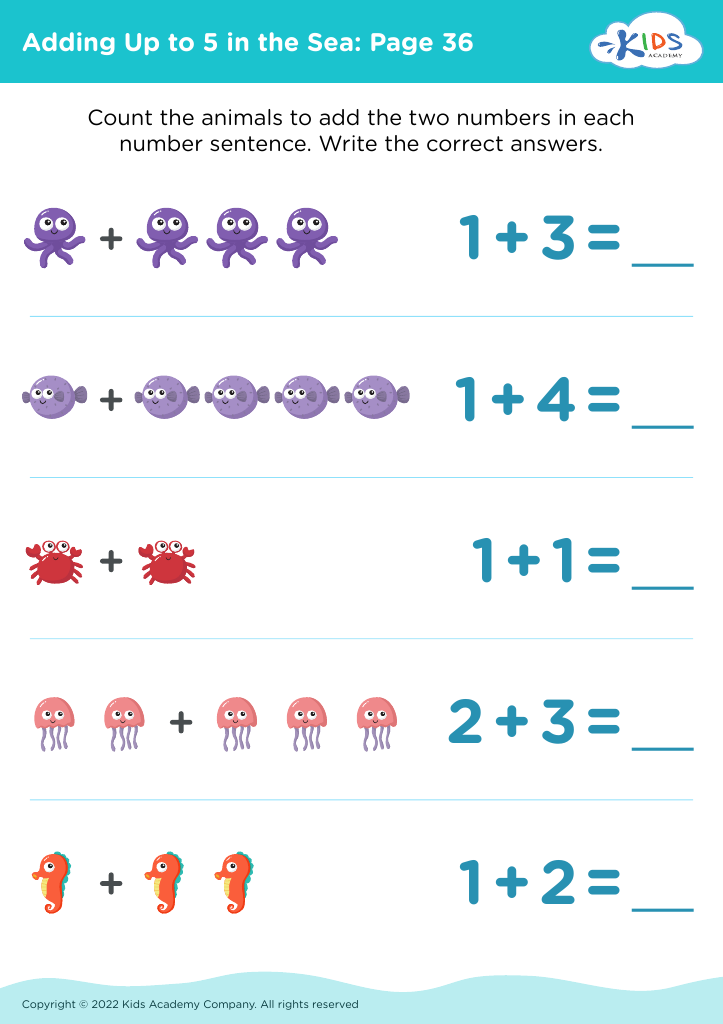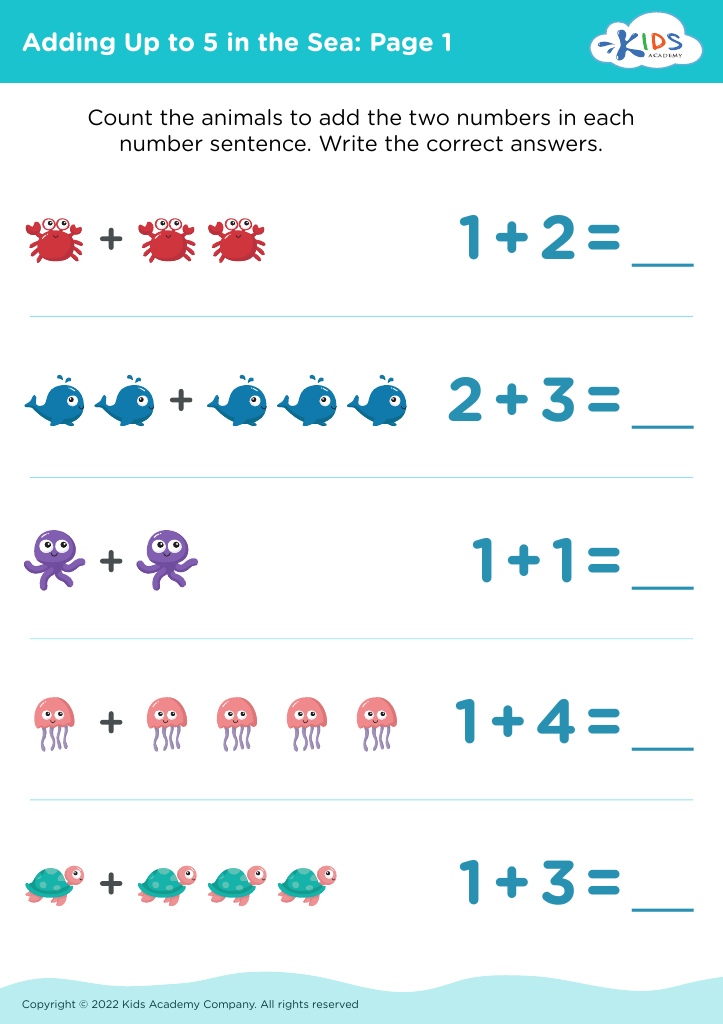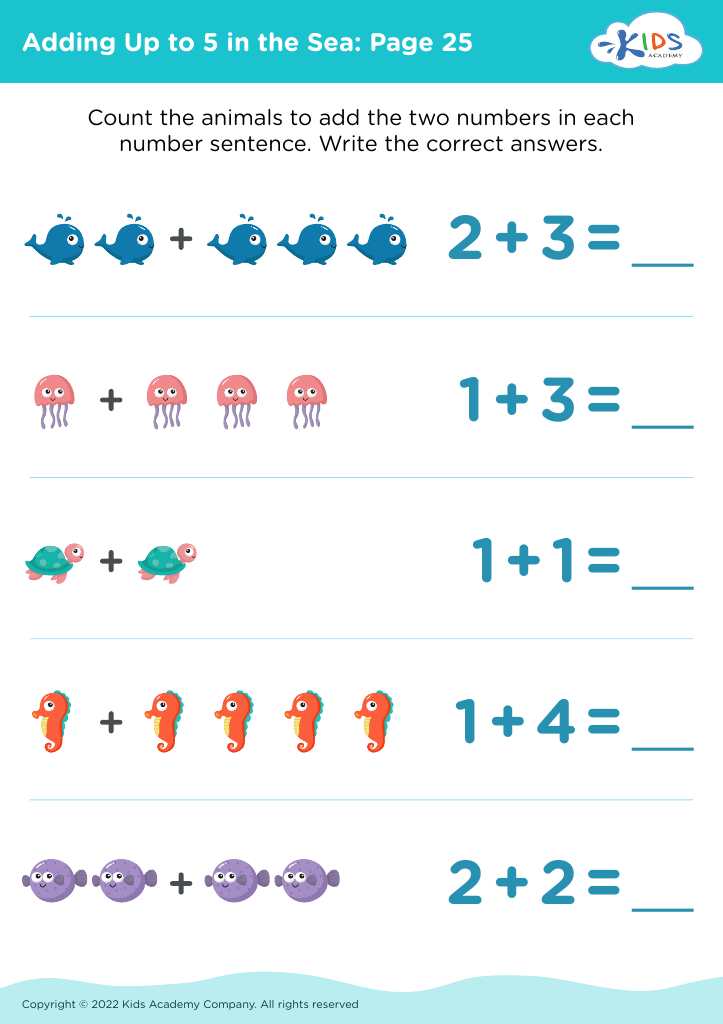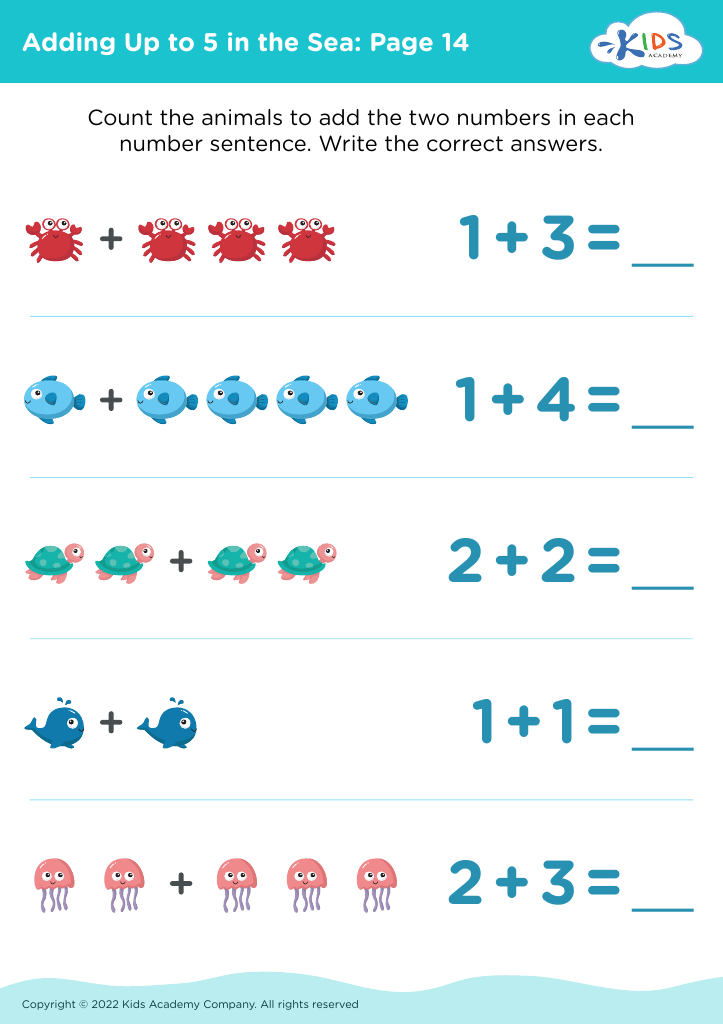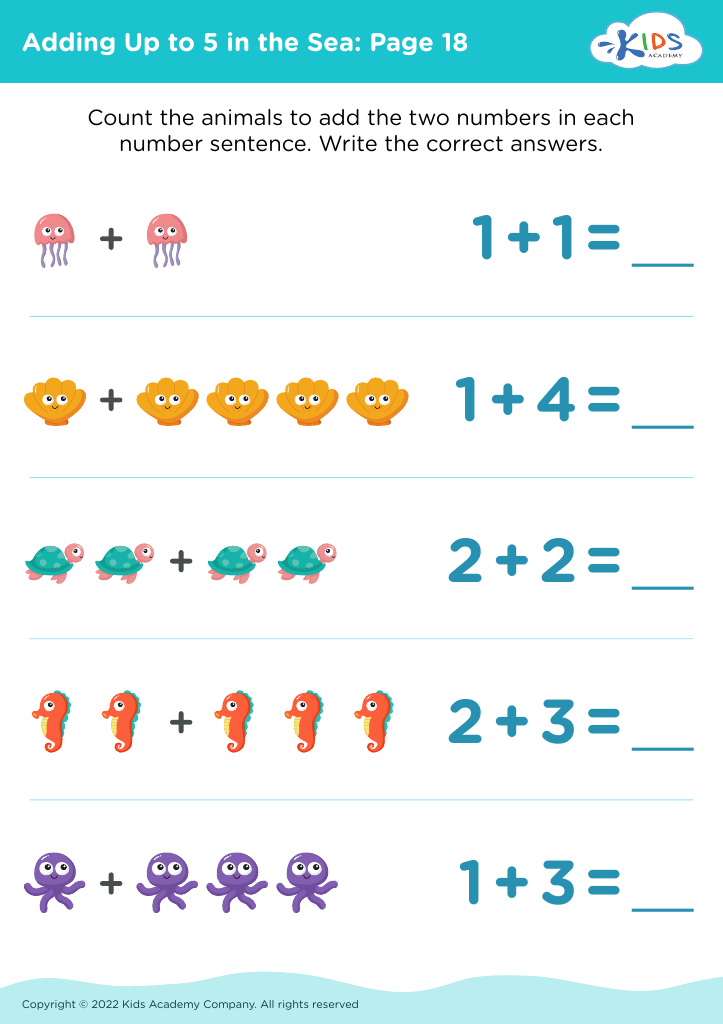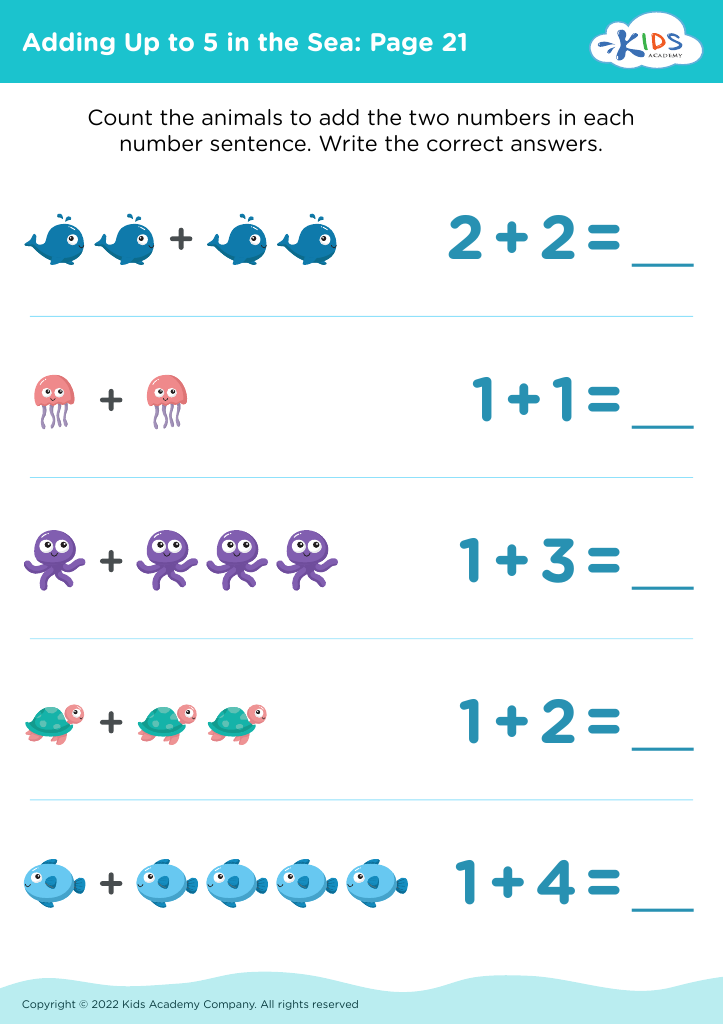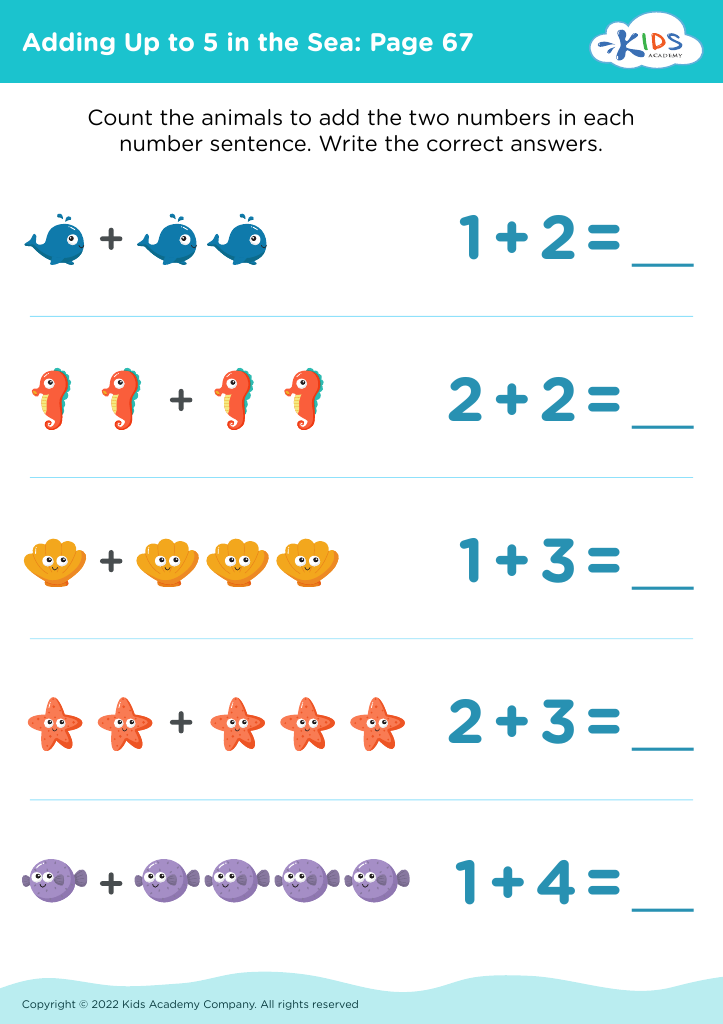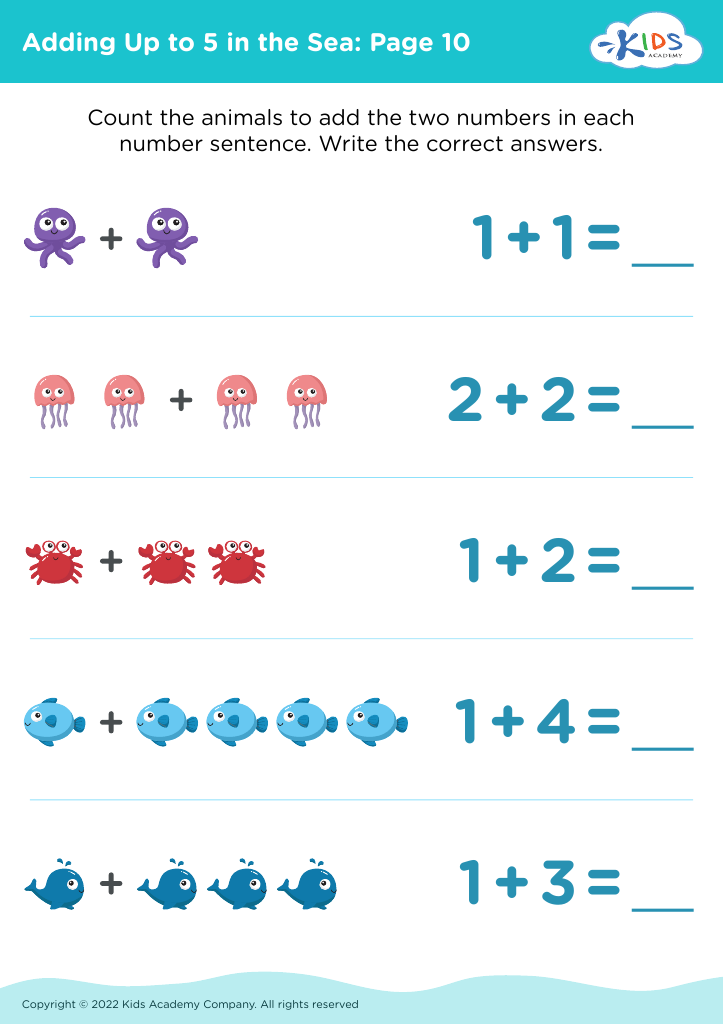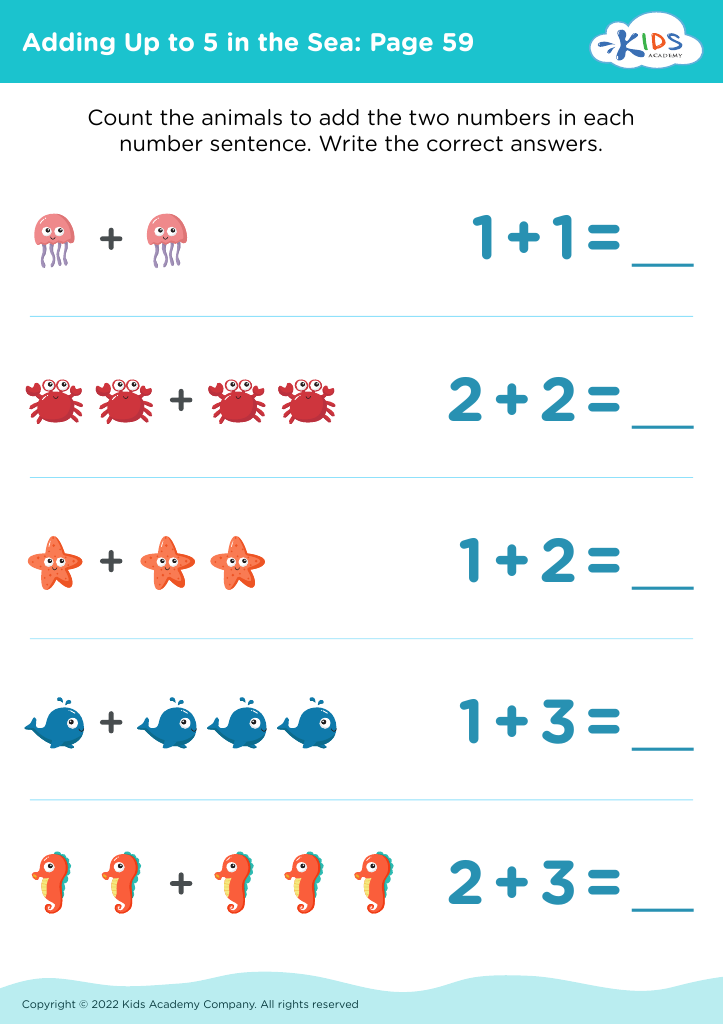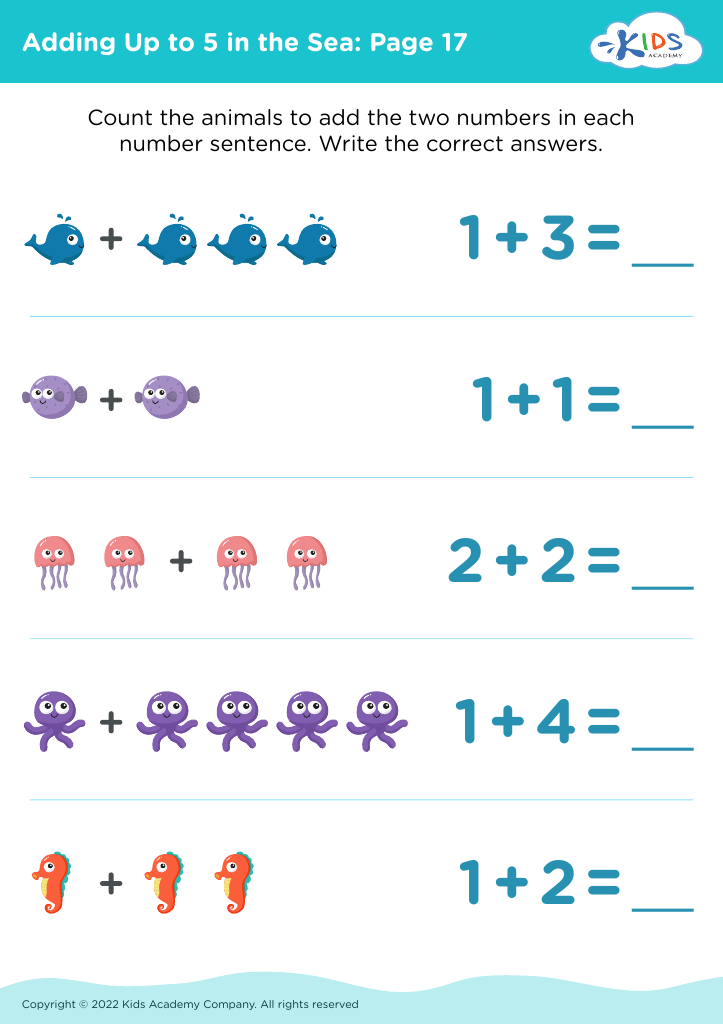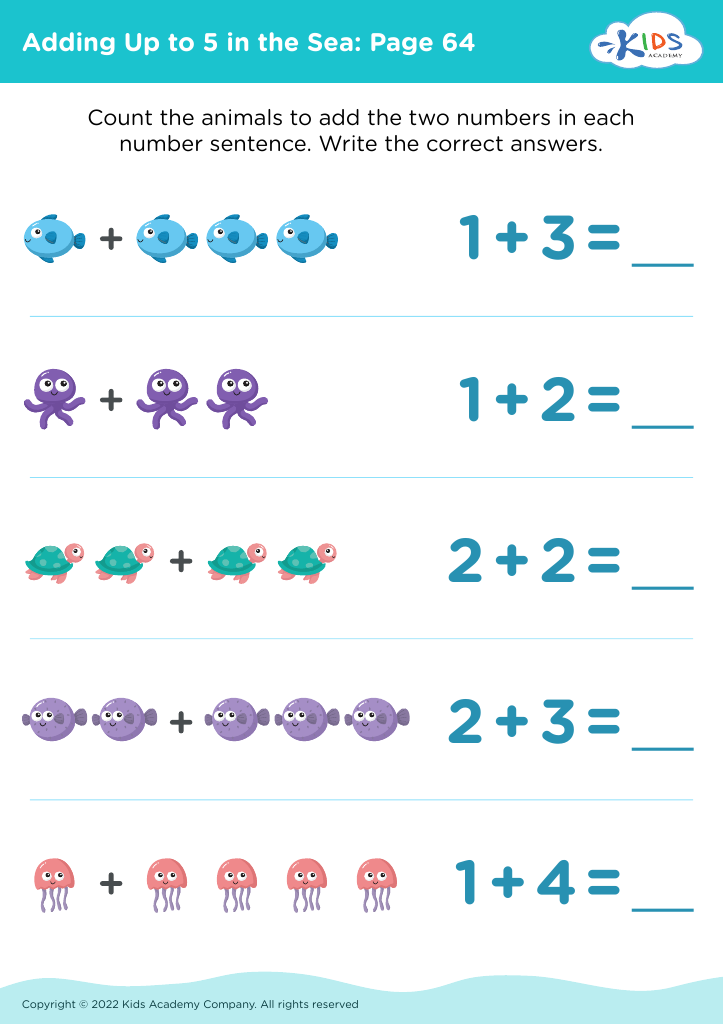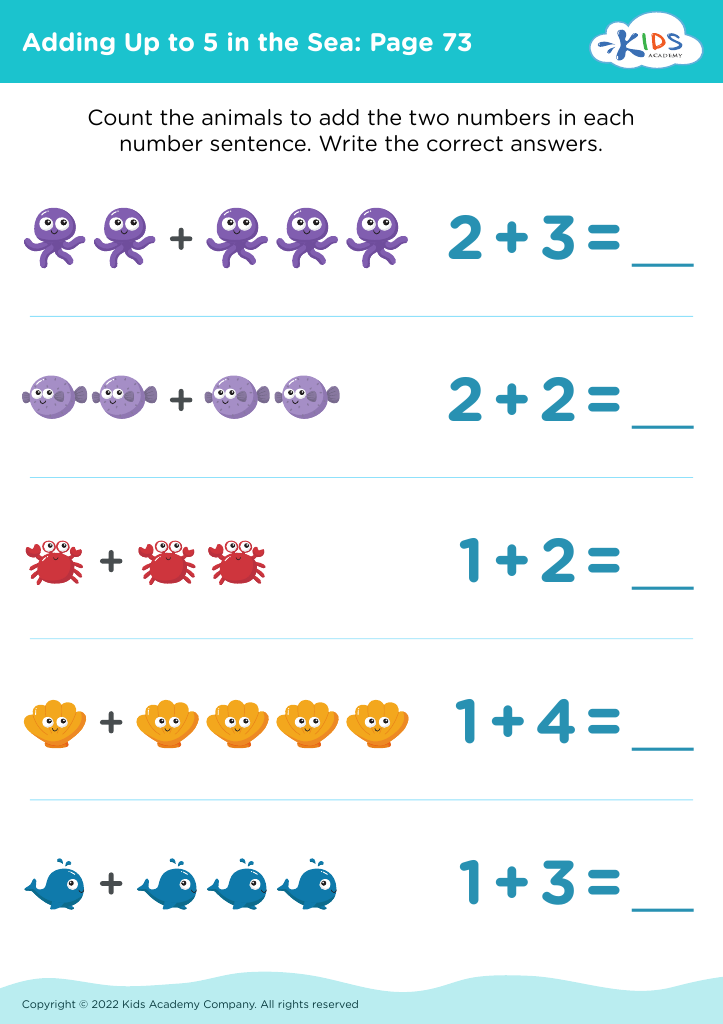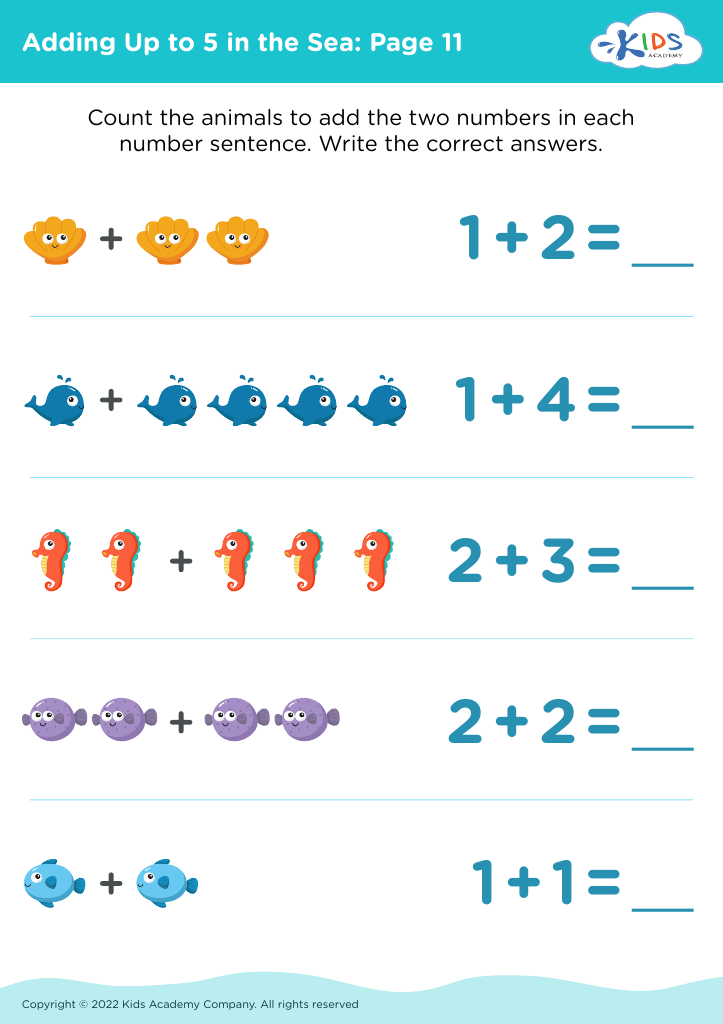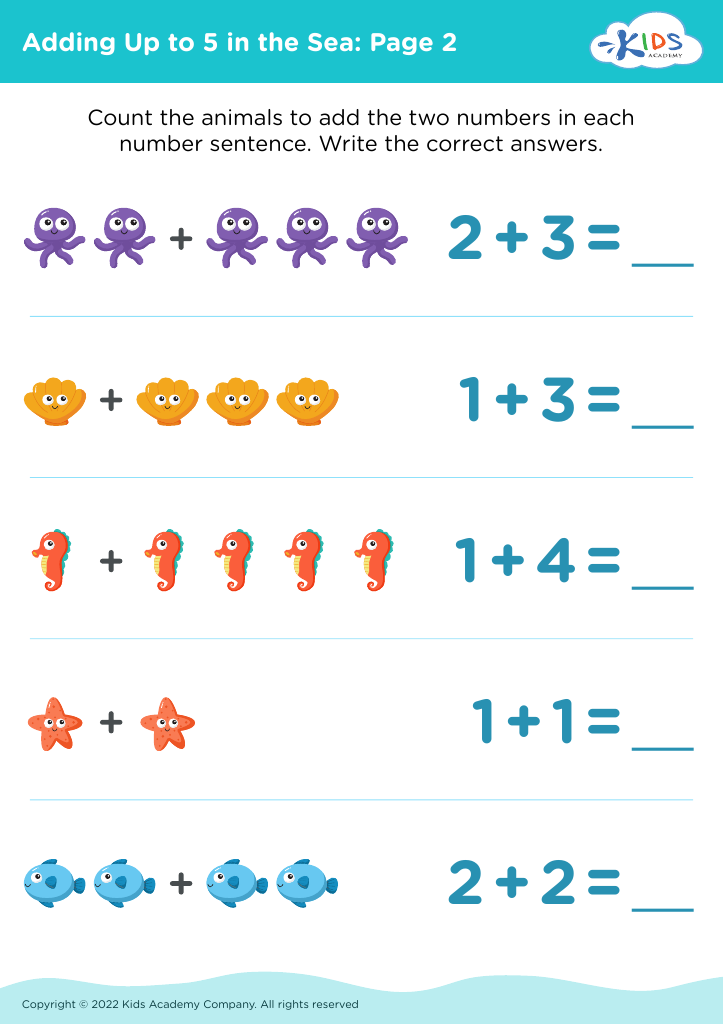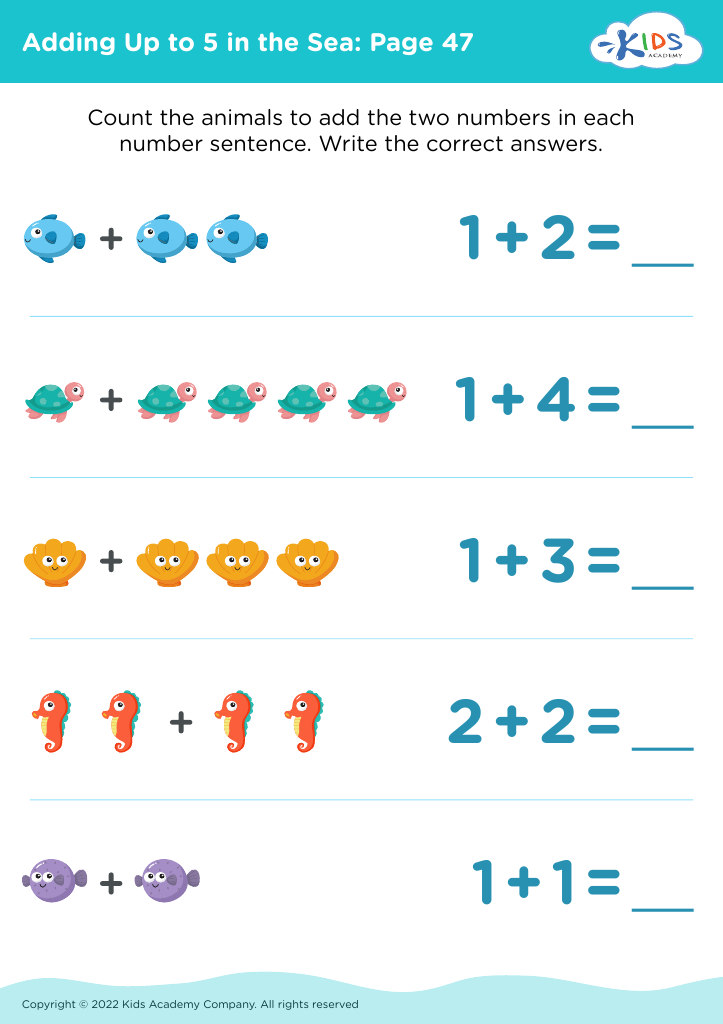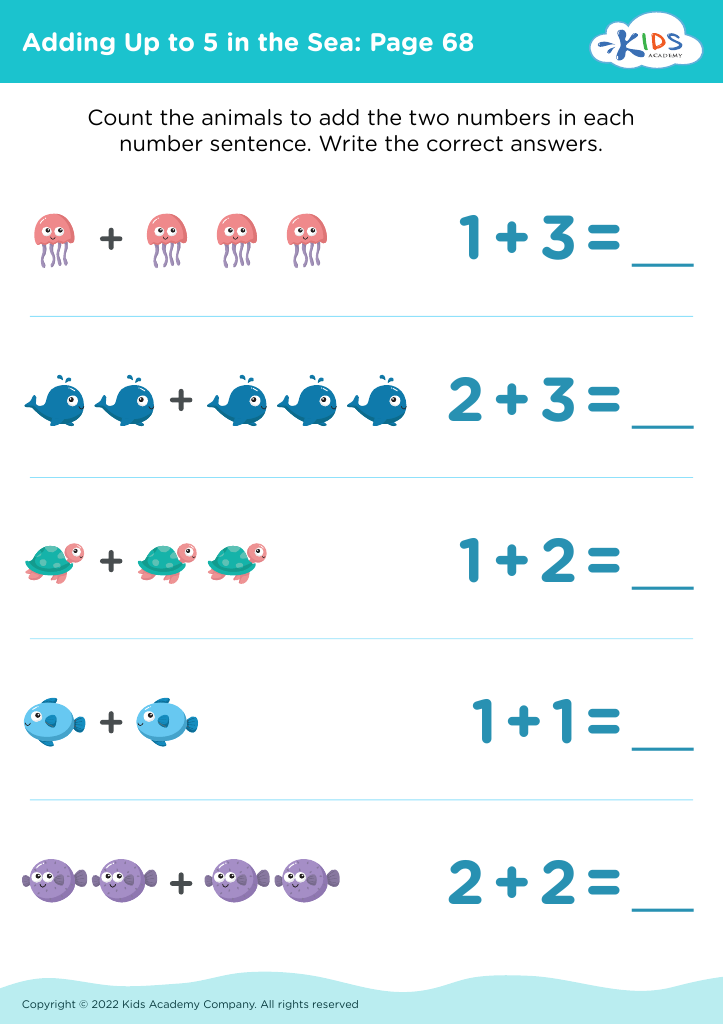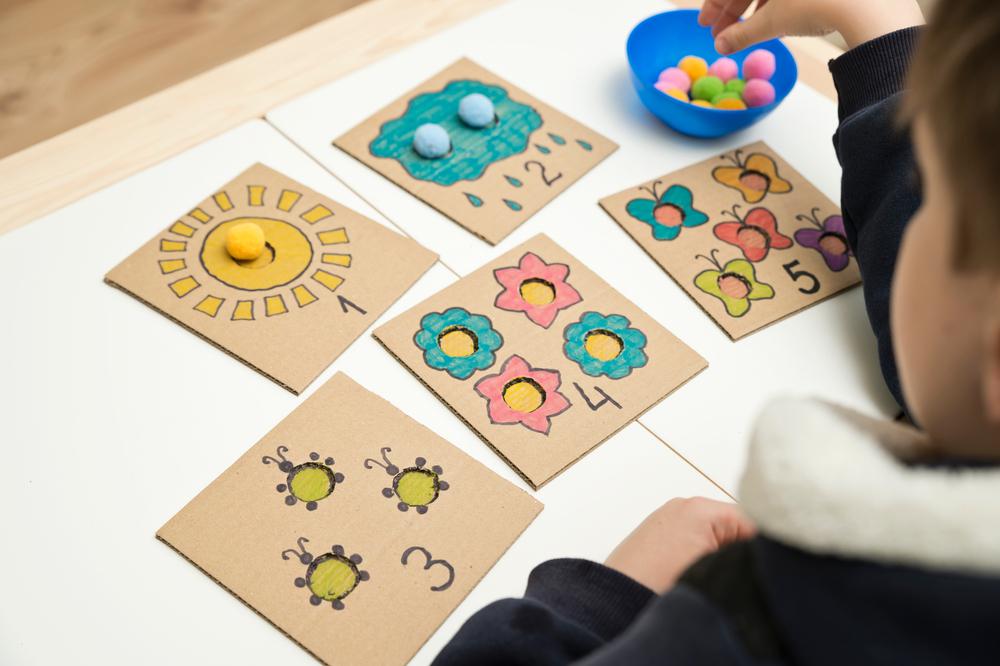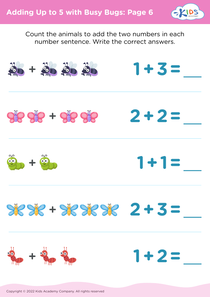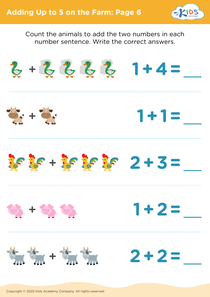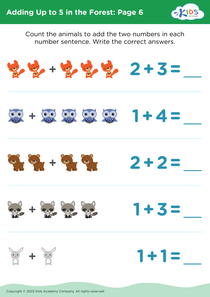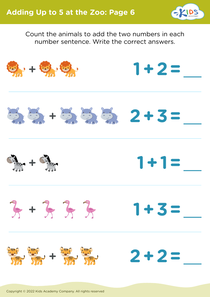Visual Learning Adding in the Sea Worksheets for Ages 4-6
18 filtered results
-
From - To
Discover our engaging "Visual Learning Adding in the Sea Worksheets" designed specifically for children ages 4-6! These colorful and interactive worksheets immerse young learners in an ocean-themed adventure, making math exploration both fun and effective. Each worksheet encourages visual learning through vibrant illustrations and relatable sea creatures, enabling kids to grasp addition concepts intuitively. Ideal for teachers and parents, these resources support foundational math skills while fostering creativity and imagination. Dive into a world of learning where children can enjoy hands-on activities, develop problem-solving skills, and build confidence in their math abilities. Perfect for early math education and enhancing classroom engagement!
Visual learning is a crucial approach for young children, especially ages 4-6, as it taps into their natural curiosity and propensity for visual engagement. At this developmental stage, kids are highly responsive to visual stimuli, and integrating visuals, like pictures, maps, and colorful diagrams, can significantly enhance their understanding of complex concepts. For instance, using visual aids in a sea-themed lesson can make learning more relatable and enjoyable, enriching a child's vocabulary around marine life, ecosystems, and conservation.
Parents and teachers should care about visual learning because it meets children where they are developmentally, promoting better retention and recall of information. When children can see what they're learning about—like the vibrant colors of coral reefs or the various species of fish—they form stronger cognitive connections. This method also accommodates various learning styles, ensuring that visual learners particularly benefit while encouraging others to engage and explore.
Furthermore, visual learning promotes critical skills such as observation, analysis, and creativity. By integrating fun sea-related content, children not only acquire knowledge but also develop a lasting appreciation and stewardship for the ocean and its inhabitants. This foundation is essential for holistic development, laying the groundwork for lifelong learners.

